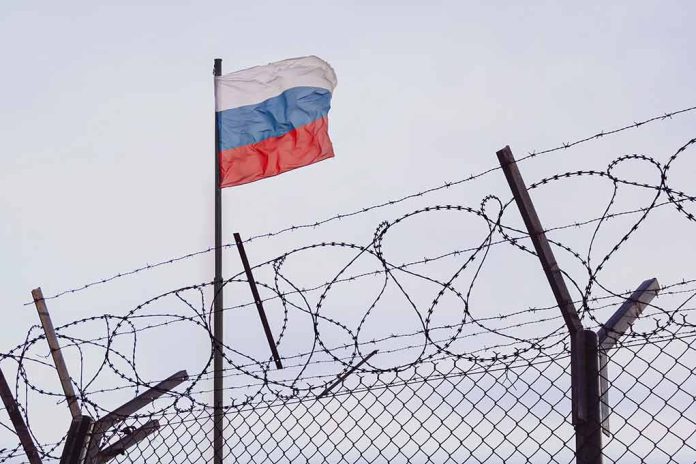
As geopolitical tensions surge, the U.S. targets Russia with powerful sanctions aiming to undermine the nation’s oil production and disrupt its shadowy oil shipping operations, the “dark fleet.”
At a Glance
- A quarter of the global tanker fleet transports Russian cargo, questioning the “shadow fleet” narrative.
- The price cap regime limits Russian crude export revenues.
- Russia bypasses sanctions using a “shadow fleet” of over 400 aging tankers.
- U.S. sanctions target Russian oil production and its “dark fleet.”
Escalating Sanctions
The United States has intensified sanctions on Russia amidst increasing geopolitical tensions. These sanctions specifically target Russia’s oil production capacities and the so-called “dark fleet.” The goal is to severely impact the Russian economy, notably affecting sectors that substantially contribute to its revenue. Western allies have steadily worked to limit Russian financial power, and U.S. officials implemented these broader measures as a strategic maneuver to undercut Russia’s economic influence globally.
U.S. actions add to existing pressure from the price cap imposed by Ukraine’s allies in late 2022, limiting Russian oil revenues and forging a collective stand against Russia’s tactics. Russia circumvents these controls by utilizing an aging “shadow fleet,” involving a significant portion of the global tanker network, to transport oil outside the established price cap regime.
🚨 NEW: The U.S. announces major sanctions on Russia's energy sector:
•2 top oil firms hit
•183 "shadow fleet" vessels sanctioned
•Dozens of oil traders/officials targeted
•Restrictions on Russian LNG & future oil projects.Aimed at crippling Putin's war economy.
— Misha Komadovsky (@komadovsky) January 10, 2025
Dark Fleet Dynamics
The Russian fleet leverages over 400 aging tankers, facilitating the transportation and continued sale of oil despite international sanctions. These vessels, often flagged under jurisdictions like Gabon or the Cook Islands, enable Russia to outmaneuver the $60 per barrel price cap imposed by Ukraine’s allies. By using the shadow fleet, Russia benefits economically, sustaining its war efforts and maintaining currency stability. Official monitoring of these operations remains intense, focusing on minimizing potential breaches affecting vital infrastructure.
“Specific vessels identified as being part of Russia’s shadow fleet have been registered into the system so they can be closely monitored when approaching key areas of interest,” the U.K. Ministry of Defense said in a statement.
Data analysis confirms 735 of 2,849 tracked tankers have docked at Russian ports in 2024, shielding Russian oil from the effect of sanctions. The shadow fleet’s operations, while controversial, have added billions to Russia’s revenue, bolstering its ability to finance defense and enforce state budget discipline.
🚨NEW: European sanctions fail to stop dark fleet tankers shipping Russian oil. For the US, it’s a different story.https://t.co/OUpq31K8FJ#shipping
— TradeWinds (@tradewindsnews) October 17, 2024
Western Strategy and Implications
Western sanctions have kept 270 vessels out of operation and heightened Russia’s logistical costs, constraining its reach further. The sustained pressure reflects an unwavering commitment from the Group of Seven democracies and the broader Western coalition to restrict Russia’s access to vital revenues fueling ongoing conflicts. Additionally, the potential environmental dangers linked with an aging fleet under questionable insurance coverage remain a concern.
With geopolitical stakes high, the Western strategy remains focused on tracking, controlling, and potentially neutralizing routes and methods used to violate international sanctions, reinforcing a firm stance against continued aggression.





